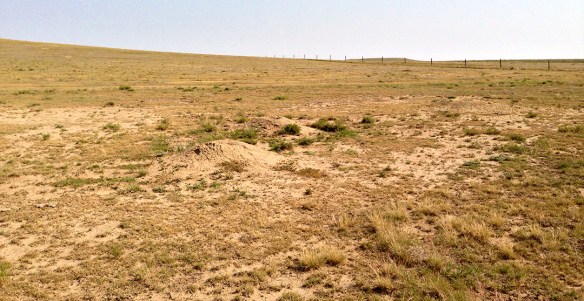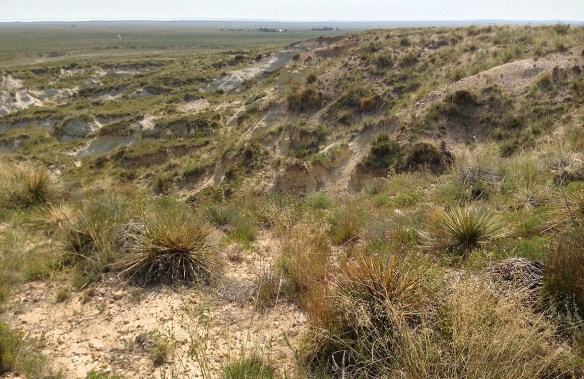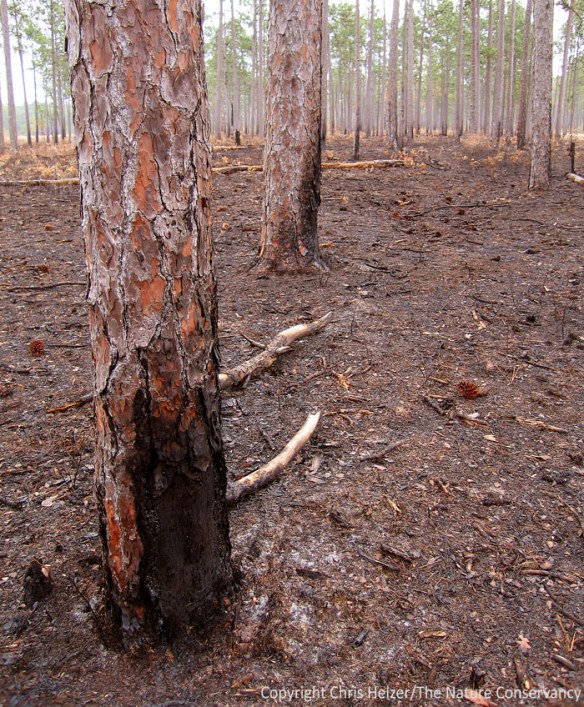A Guest Post from Anne Stine, one of our Hubbard Fellows:
First impressions: Patch-burn Grazing in Short Grass Steppe vs. Mixed Grass Prairie
Our Platte River Prairies here in south central Nebraska are lovely, flowery pastures, but I needed to travel to get a more complete concept of how patch-burn grazing works across different landscapes and precipitation regimes. It was this drive that brought me to the Central Plains Experimental Range (CPER) in the short grass steppe of Pawnee National Grassland in eastern Colorado.
My two guides, David Augustine and Justin Derner, were kind enough to spend a morning showing me around their site. First impressions- the obvious: CPER is much drier. They average 13 inches of rain annually to our 25. We don’t have much in the way of species overlap between our sites. Blue grama with small patches of buffalo grass, wheatgrass, and prickly pear seemed to be the dominant community at the CPER pastures we visited. In comparison, we see big blue stem/switch grass/dozens of forbs/etc etc as the major species in our mixed grass system.

CPER: Another major difference- look at the ground cleared by a small prairie dog colony! Photo by Anne Stine.
A major management impact of this different precipitation regime is that their sites cannot carry fire year round. There simply isn’t enough fuel. Their estimated fire return interval (the average ‘natural’ length of time between burns on a site) is much longer than ours. The estimate they gave me was 10-40 years. By comparison, much of the tallgrass ecosystem is believed to have a return interval of approximately 3 years. Luckily for them, the harsher conditions are keeping woody encroachment at bay, so they don’t need to burn frequently.
I spent much of my visit puzzling out the major value of fire to the short grass steppe. The benefits in the mixed grass prairie are dramatic. However, most of the positive impacts of fire that we see here in Nebraska (preventing woody encroachment, changing the balance of power within a plant community to favor forbs) just aren’t evident in eastern Colorado. As mentioned previously, trees are not a problem in their drier climate, and forbs were largely absent even on burned areas.
Justin and David explained that burns are critical for habitat heterogeneity, particularly for clearing ground to produce ideal habitat for birds like the mountain plover. They also see a decrease in the amount of prickly pear at a burned site. Burns remove the spines, and pronghorn come in to forage on them over the winter. Forage quality of the native grasses also improves after a burn, similar to at our sites, but this is a smaller and more transient effect as distribution of precipitation over time and the landscape takes over as the most important ecological factor.
I left Colorado with the impression that the mixed grass prairie ‘leans east’, if you will. It is more similar to the tallgrass prairie than the shortgrass steppe. It’s as if some precipitation threshold is crossed once you move west of the mixed grass system, and an entirely new set of challenges replaces what we have east of that line. Here in the mixed grass, periodic, varied disturbance seems to be the key to biodiversity. In the west, perhaps the periodic, varied change in conditions is embedded within the precipitation regime itself. As I travel, I will continue to explore the question of how grassland management for biodiversity changes in different regions.
.






